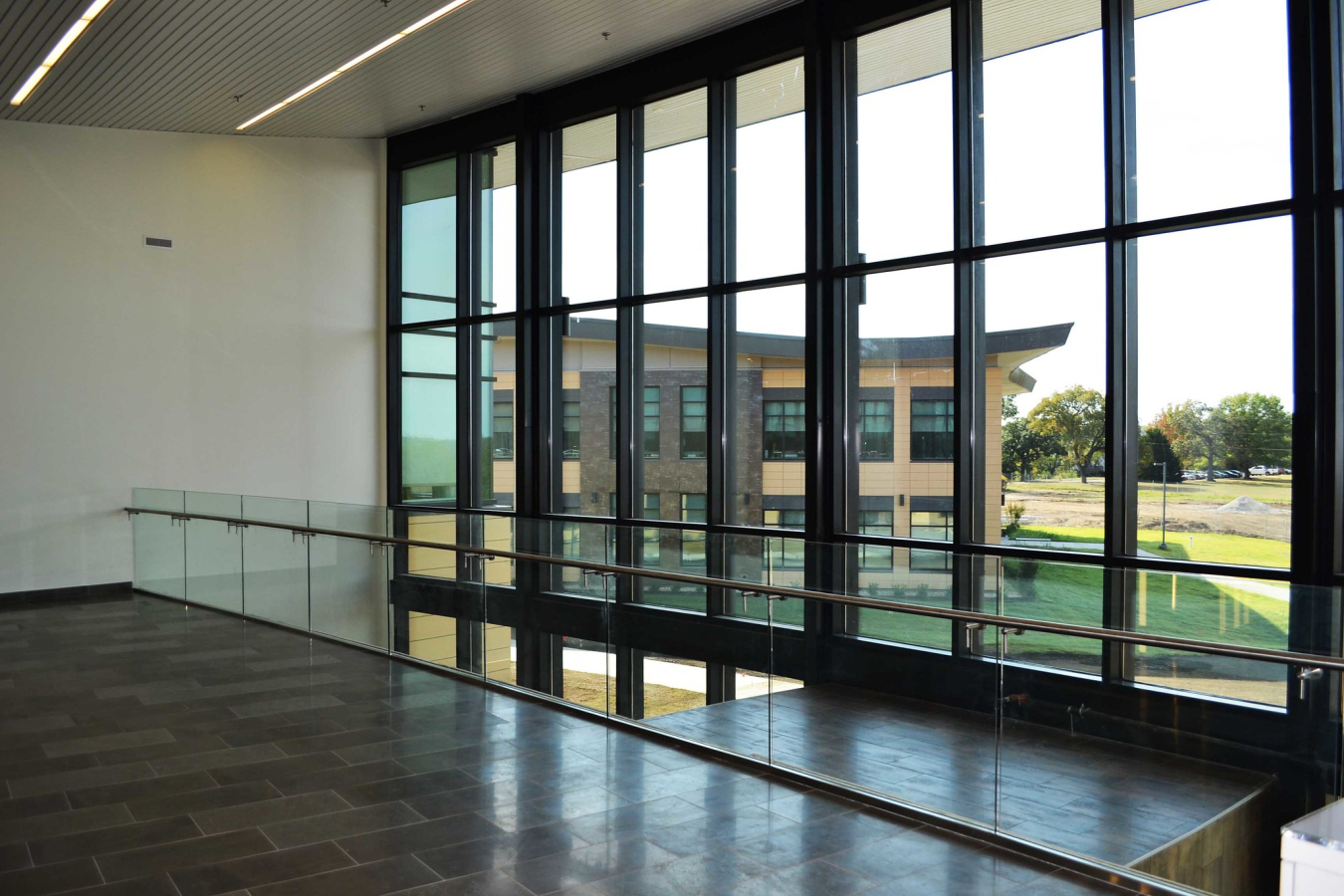
The Osage Nation’s state-of-the-art Welcome Center, opened in November 2015, is elegant, inviting, and highly energy efficient. The 20,000-square-foot Welcome Center houses mostly service programs. The building incorporates daylighting, energy-efficient windows, geothermal heat pumps, fans, and other environmentally friendly design features.
Advancements in lighting technologies, such as high-efficiency LEDs and advanced lighting controls, have greatly reduced building lighting energy. This paired with daylighting design strategies (using sunlight to offset electrical lighting loads) are essential to the success of zero energy buildings. Properly designed and well-integrated lighting and daylighting solutions can save energy and reduce cooling loads in commercial buildings.
Daylighting should provide controlled, quality lighting and deliver better lighting than electric lighting alone. Otherwise, occupants are encouraged to turn on the electric lights even when they are not needed. A good daylighting solution is one that will provide a minimum of 300 lux for at least 50% of the operating hours.
At the same time, direct sunlight into regularly occupied spaces should be limited. Good daylighting design seeks the right balance between enough daylight and too much sunlight, which can be a source of glare and excessive heat gain.
If designed correctly and followed up with appropriate occupant education, daylighting can reduce lighting energy, peak electrical demand, cooling energy, and maintenance costs.

